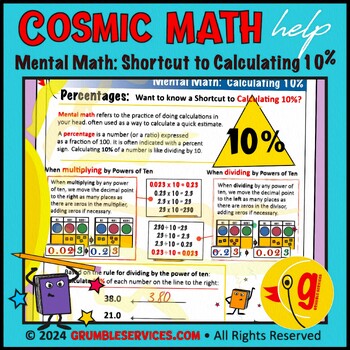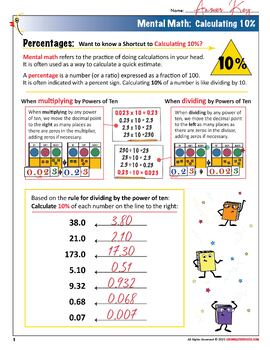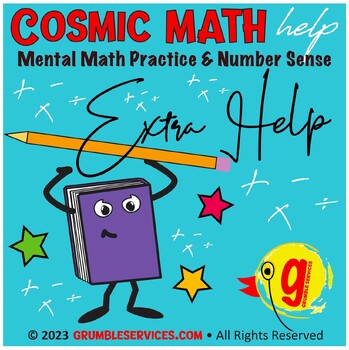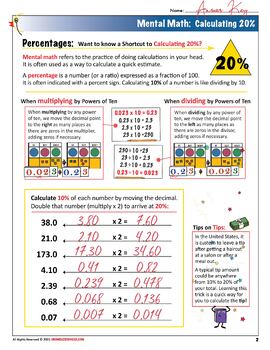Mental Math & Number Sense: Percentages & Powers of Ten • Calculate 10% Shortcut
- PDF
Description
Mental Math & Number Sense: Percentages & Powers of Ten • Calculate 10% Shortcut • SEMiPRO Montessori-inspired Math help (1 printable page + key):
Percentages and Powers of Ten. These pages guide young mathematicians to:
- Practice moving the decimal point one place to the left in to quickly calculate 10%
- Discover the effects of multiplying and dividing by the Power of Tens
- Explore example problem using the Montessori Decimal Board Material as a guide!
Percentages and Powers of Ten: What is the effect of multiplying and dividing by the powers of ten? Practice moving the decimal point one place to the left in order to quickly calculate 10% of a number. Examples on Montessori Decimal Board Material included! Fun little exercises for the older student. Enjoy Mental Math & Number Sense: Percentages & Powers of Ten • Calculate 10% Shortcut!
Do you like Mental Math & Number Sense: Percentages & Powers of Ten • Calculate 10% Shortcut Math help? Please consider other EXTRA MATH HELP learning resources from Grumble!
Mental Math & Number Sense: Percentages & Powers of Ten • Calculating 10% & 20%
Mental Math Practice & Number Sense: Rounding Money, Decimal & Mixed Numbers
Mental Math Practice & Number Sense: Division & Rules for Divisibility 10 & 25
Looking for High Quality, Professionally Designed Elementary Learning Resources? Look no further--FOLLOW GRUMBLE! Although the word Montessori is in the title, ANY type of elementary student will benefit from independent, self-directed learning.
As stated in the Teachers Pay Teachers refund policy, “all sales on TpT of digital resources are considered final and nonrefundable.” Please ask any questions you have about this product before purchasing. Thank you! © 2020-2024 Grumble Services, LLC. • All rights reserved.
Dr. Maria Montessori believed the only way our world would find lasting peace was through educating our children. Much of her elementary curriculum was written by her during a period of internment in India during WWII. This time period helped solidify Dr. Montessori’s belief in Peace Education.
Resource Color Guide (just like the Montessori hierarchical colors):
ROOKIE Pages (Green) - Aimed toward early to mid level elementary students.
SEMiPRO Pages (Blue) - Aimed toward mid level elementary students.
VETERAN Pages (Red) - Aimed toward mid to late level elementary students.
But of course, you know the child best, so adjust accordingly.
In the words of Dr. Montessori, "Follow the Child!"





